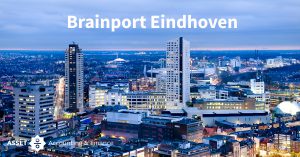“Is it possible for an auditor to obtain adequate assurance on the operation of an actual procedure, in an environment with substantial volumes, with a limited number of partial observations?” To ask the question is to answer it. This control approach, with system-oriented testing, is deemed old-fashioned in the year 2016. However, most auditors continue to meet the overall sector image of ‘retentive’ and ‘conservative’. Although nothing is wrong with a retentive and conservative stance, with the arrival of the new generation of data analysis techniques it is time for a change in the accounting profession now.
The motivation for writing this blog is the greatly increased interest on data analysis in academic literature and the accounting profession . Where data analysis was once limited to financial information from the general ledger and sub- administrations, it is now possible to fully analyze all transactions recorded at a more granular. Limitations in the availability and accessibility of data from the past have faded. The new technologies in the field of data analysis make it possible to add a new dimension to the current audit approach, whereby a change in the balance between system-based and substantive testing occurs.
In its recent inspection reports, the Financial Markets Authority (AFM) asserts that auditors insufficiently anchor the relationship between identified risks and its consequent systemic and substantive procedures effectivly in their audit approach (AFM , 2014). The aspect “completeness of revenue recognition” combined with the “integration of IT in the annual audit” are appointed by the AFM as key issues in its thematic studies (AFM , 2013 a and b) .
The integration of the value cycle model from Starreveld in the control approach, where electronic data plays an important role, can enhance the understanding of business processes and as such, can give direction to the control approach. The typology model from Starreveld constitutes ‘a character portrayal’ of ideal-type organizations (Van Leeuwen & Starreveld, 2005). In practice, companies are extraordinarily varied, complex and, moreover, subjected to change. Many companies are in practice characterized by a combination of two or more of the typologies. The connecting factors for the completeness of revenue recognition and distortions that occur there make any organization, and therefore each check, unique. The typology model helps the auditor to understand the company. The deployment of data analysis in the annual audit contributes to a better understanding of how the operations are anchored in processes in the IT landscape of our customers.
The application of data analysis is mentioned only twice in the auditing standards (Eimers and Van Leeuwen, 2015). The Dutch Standards on Auditing (NV COS) thus seem out-dated in its statements about electronic data. However, the current auditing standards do offer plenty of space to gather sufficient and appropriate control information through data analysis. Although professional scepticism of the auditor remains indispensable to sufficiently verify and document the reliability of the data.
The deployment of data analysis techniques in the audit strategy starts with having a good understanding of the activities, the IT landscape, the revenue streams of the customer, and the analysis of the available information sources. The use of data analysis in the annual audit in my opinion will result in changes in the audit approach and the mix of audit procedures. It also appears in practice particularly useful for gaining insight into the business processes and provides a good basis for an efficient and effective audit approach. This will also mean a revolution in the thinking of auditors in relation to data and information.
What’s new?
“Process mining” is an evolution in the context of data analysis. In its core, process mining is a technique in which algorithms based on a so-called event log map a business process. In the upcoming years more emphasis will be placed on automated data processing. The exponential growth of digital data and computing enables it to track and analyze processes more accurately. More and more events are recorded and stored in the so called event logs. Audit firms therefore need employees who know how to transform data into information, in other words “value” for the customer.
Grant Thornton is one of the pioneers in the use of data analysis in the audits control. From our practice, there is a wide range of appealing examples of completed audits, where data analysis techniques have been used successfully. In our own practice, we also start using process mining more often in a structured and careful manner during the annual audit for our clients.
What’s next?
In business, the focus is increasingly shifting from the analysis of historical data to real-time applications (predictive analytics ) and automated process improvements using advanced tooling. Using such data analysis, the management is able to respond adequately to changes occurring in business processes, making these processes more efficient and effective, which has a positive effect on the overall business operations. Audit firms will have to innovate to keep up with developments in the market and to be able to meet customer demand.
About the Author
Marc Buijs is a Manager Audit & Assurance at Grant Thornton. He finished his postgraduate studies as registeraccountant at the University of Tilburg and is an alumni member at Asset|Accounting & Finance. His clientele primarily consists of mid-sized and large private family businesses that operate internationally.
Literatuur
- Autoriteit Financiële Markten (AFM) (2013a). Themaonderzoek niet-OOB accountantsorganisaties – deel 1: NBA kantoren.
- Autoriteit Financiële Markten (AFM) (2013b). Themaonderzoek niet-OOB accountantsorganisaties – deel 1: NBA kantoren.
- Autoriteit Financiële Markten (AFM) (2014). Uitkomsten onderzoek kwaliteit wettelijke controles Big 4-accountantsorganisaties.
- Eimers, P. & Leeuwen, O. van (2015). De typologie als basis voor een effectieve en efficiënte data-analyse. Maandblad voor accountancy en bedrijfseconomie, 89e jaargang, oktober 2015.
- Leeuwen, O. van & Starreveld, R. (2005). Bestuurlijke informatieverzorging: Typologie van de bedrijfshuishoudingen. Noordhof Uitgevers

















